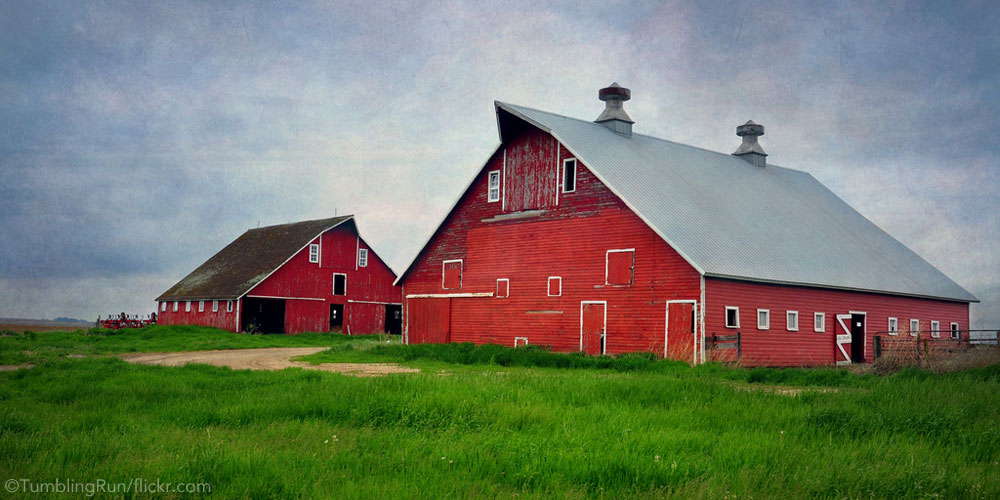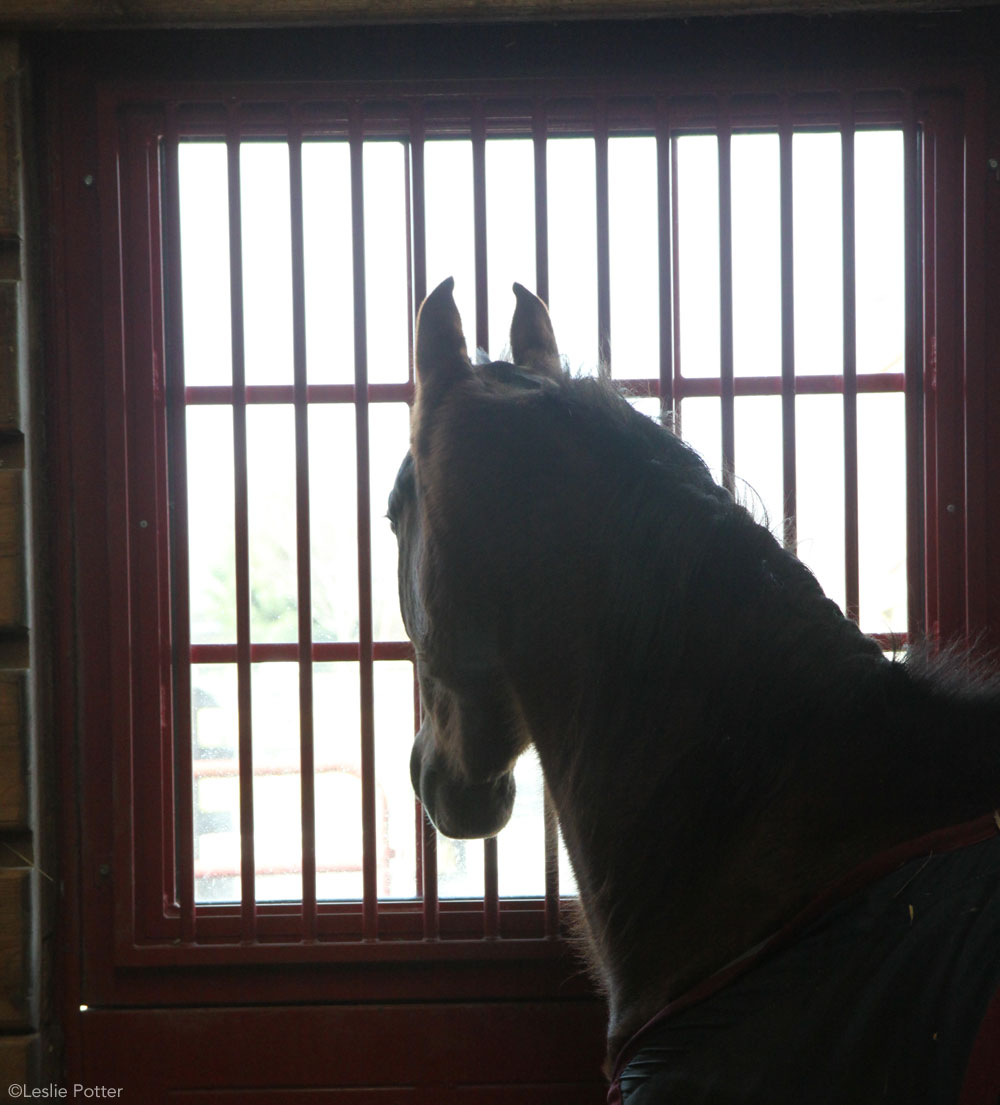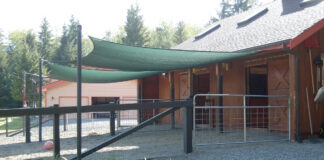
A small percentage of horse owners purchase acreage with state-of-the-art equine amenities, but the rest of us have structures that need repair, modification, or updating. With imagination, effort, and a modest budget, an old barn can be updated to become fine horse housing.
Safety
As you plan your barn renovation, make safety for you and your horses the primary goal; no attractive amenity or spiffy hardware is worth an injury. For instance, horses have a knack for scraping their sides on open stall door latches commonly sold in hardware stores. To alleviate these hazards, major stall manufacturers have perfected sliding doors that open and close with no projecting hardware. You can update old stalls by installing these types of new stall doors on the existing door frames, or simply make sure hardware does not protrude.
Roofing
Because everything from the barn frame to the foundation can be compromised by a leaking roof, a thorough inspection of the roof should precede work done elsewhere. Often partial repair can shore up a roof for many years, but sometimes complete replacement is the best option. Roofers will advise you about whether your building requires a complete tear-off and new sheathing or a simpler fix.
While asphalt roofing has been the standard for most outbuildings for decades, old roofs are often missing enough shingles to look bad and leak, but not enough to induce a roofer to come out for such a small job. Many barn owners replacing roofs turn to steel panels in spite of their higher cost. For most people, the longevity and reflective capability of lighter steel colors offsets the loss of a traditional appearance.
Deciding the extent of roof repair you plan to do is usually determined by your finances and how long you plan to remain on the farm. However, it’s one of the improvements that often pays for itself when you sell the property; buyers tend to balk at costly roof repairs.
Electrical Work
Your barn’s electrical system is not the part of renovation where you should try to save money by doing it yourself. Hire a professional electrician to inspect the fuse box, wiring, and fixtures in your barn. Few bigger catastrophes can befall a horse owner than a barn fire, and most are caused by faulty electrical connections. Rodents also pose a hazard because they chew on electric cables. An electrician can bring your barn’s electrical system up to code, install metal conduit around wiring, and add outlets and lighting where you want them. You may also need covered electrical outlets installed on the outside of your barn for a fence energizer, stock tank heater, power equipment or motorized bale elevator.
Try to assess your requirements before the electrician arrives to avoid paying for multiple visits. You may need more power outlets than you originally think, so consider all your possible plug-ins. Heated buckets, heat-tape, electric clippers, hot water heaters, the barn radio, power tools and veterinary equipment such as radiograph machines, compound quickly . Running extension cords across the floor is not a safe alternative to proper wiring.
Siding
Old barns almost always need some repair and painting. Power washing easily strips curling paint from siding, but should be done carefully, as overly aggressive spraying can damage weathered boards. Even wire brushing may be too harsh for some surfaces, so keep a plastic scraper handy for more compromised spots.
Siding can be so weathered that boards resemble tree bark, yet ancient lumber can be amazingly strong. (Cheap nails often bend like pipe cleaners when sunk into old boards.) Consider yourself lucky if you have a solid frame behind the siding, and use galvanized spiral nails to reattach loose planks. If the inside framework is missing or crumbling, rebuild it near the existing structure or add new lumber to the solid sections of the original frame.
Replacing missing boards on older buildings can pose a challenge if they aren’t a standard length and width. The same goes for battens (the 3 ½” wide vertical boards that cover the spaces between larger boards). The old “bell” shape batten is difficult if not impossible to find and is typically a custom order from a lumber company.

Cover stall windows with mesh or grilles to prevent curious noses from breaking the glass.
Windows
If your barn windows are due for complete replacement because of cracked glass, missing caulking, or crumbling wood frames, you can still find a few wood-frame barn windows in standard sizes at big-store lumber retailers. Unusual sizes will require custom construction.
All stall windows should be protected by a mesh grill or metal bars to keep horses from poking their noses through the glass; cover outside windows as well if your horses have access to them. The smaller sections of graduated-size stock panels for farm animals can be cut to use for this purpose, but should always have intact square edges to prevent halters from getting hung up on exposed wire.
Non-Slip Aisles and Walkways
Older farm buildings typically have poured-cement aisles that are slippery as a bobsled run during hot weather when high humidity causes the surface to “sweat.” While solutions for this range from costly to super-costly, the safety of secure footing is well worth the expense. Many owners place rubber mats or interlocking pavers on the aisles to increase traction.
If you will be pouring a new concrete aisle, consider some choices for a safer surface. One horse owner designed the aisle so that rubber mats could be recessed and the surface would be even. Others have the new concrete “brushed” for better traction. Some save money by placing pavers or mats only in strategic areas.
Consider clean-up when deciding between options to improve traction. Many owners report the difficulty of keeping pavers tidy without both sweeping and power-blowing. Placing several rubber mats down the aisle works well but the individual sections do move apart with use and need regular nudges to stay in place.
Restoration Materials
Four products are go-to items for old barn repair: crushed limestone, quick-set cement, mortar mix and window caulking. Crushed limestone can be used to level stall floors, build “ramps” for uneven floor areas, and provide drainage and better footing near water sources or pasture gates. Quick-set cement is ideal for fence repair, filling holes and cracks in cement floors, and reinforcing load-bearing beams at the base. (You can press a horseshoe into the cement before it sets for decoration.) Mortar can be mixed in minutes to shore up a deteriorating foundation wall. Window caulking is invariably cracked and missing from old barn windows, so resealing windows from the outside elements keeps glass from rattling in the wind and allows you to repaint a smooth surface.
DIY Barn Restoration Tips
- If you have piles of barn debris to burn, check local ordinances first, and call your local fire department to report you are starting a “controlled burn” before lighting a match. Neglecting to do so can result in a fine of hundreds of dollars if the fire department responds to a report of a fire on your property.
- Be sure that the ground slopes away from your barn foundation.
- Plant bushes near your building foundation to help drain water from roof runoff.
- Keep a can of long-distance wasp spray handy.
- Always make outdoor repairs with galvanized nails and staples.
- To stabilize fieldstone foundations and brighten the interior, consider hiring a company to spray whitewash or shotcrete (sometimes called “gunite”), which is pneumatically-applied concrete.
- Continually inspect the ground around the barn for dropped nails or those that have popped out during repair work.
When weighing the pros and cons of building a new barn versus restoring an old one, consider return on investment and how long you plan to live on the property. Will you recoup the expenditure for a new barn when the time comes to sell? Will your property tax assessment increase with the addition of another building? You may save a considerable sum by updating what already exists.
More barn renovation resources from our friends at HobbyFarms.com:
Preserving and Restoring Historic Barns
When is a Barn Too Old to Use?
Louann Chaudier has been a boarder, horse-farm owner, and lessee over the last 25 years and published more than 75 articles on horses and farm management.
This article originally appeared in the September 2015 issue of Horse Illustrated magazine. Click here to subscribe!






I saw on your FB page / website that you are working on building a new barn – and based on research with horses and barn fires I wanted to make sure that you are aware (as most horse people are not) of National Fire Protection best practices and guidelines for preventing fire –
It is online at http://catalog.nfpa.org
Additionally – there are several blogs to apprise people of some of the biggest mistakes that people make when building barns – especially failure to put in good smoke detection systems and hardwire them to security for early warning, build a second set of doors for each stall, and use of sprinkler systems.
See – http://www.novobrace.com/barn-fire-prevention/
and http://practicalhorsemanmag.com/article/barn-fire-2
and http://stablemanagement.com/…/12-ways-to-fireproof-your-barn
I am on a mission to try to help people change what we used to do when building barns and do it in a way that we can actually have a chance to get them out.
The 704 horses in my database that have lost their lives since Jan 1 2011 in barn fires have found their voice.
Thank you….